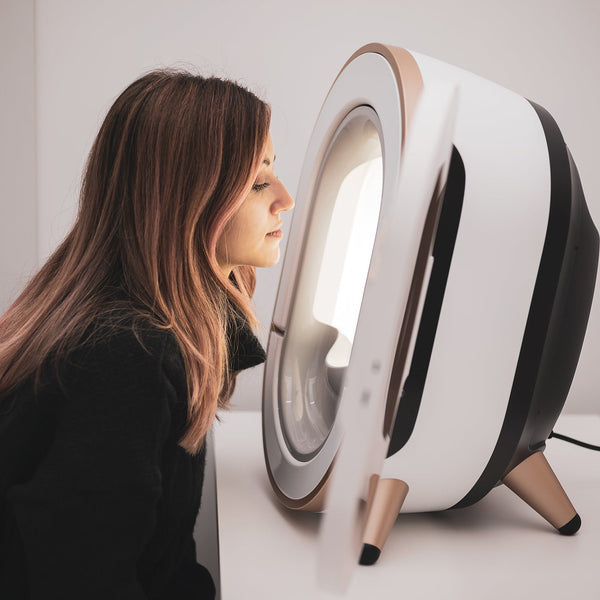Vaginal Rejuvenation

As women go through the process of aging and childbirth, they may experience changes in their genitalia. The most common changes that can impact a woman’s quality of life are vaginal laxity, stress urinary incontinence, loss of vaginal lubrication, loss of tone of labia majora, stretching of labia minora, and a decrease in sensation. Although surgical vaginal tightening procedures are not new, historically they have been performed for repairs after obstetrical delivery, rather than for sexual or aesthetic concerns. The number of aesthetic treatments, as well as corrective surgical procedures are on the rise, and these treatments are now becoming more and more common. As women become more comfortable discussing these issues with their physicians, the number of treatments available is increasing.
Currently, more than 20 million women are affected by uterine prolapse, birthing injuries, and incontinence. According to the American College of Obstetricians and Gynecologists 40% of women have psychological distress from female sexual dysfunction, but only 14% consult a physician about sex during their lifetime.
So what exactly is vaginal rejuvenation? Vaginal rejuvenation is a broad term that covers several corrective and aesthetic procedures. These procedures are meant to correct problems that can occur after giving birth or during the aging process. There are several treatments that fall into the category of vaginal rejuvenation, including surgical and non-surgical options. These procedures are targeted not only at tightening the inside of the woman’s vagina, but also at improving the appearance of the labia minora, and majora, and even amplifying the G-spot.
Normal vaginal birth can result in widening of the vagina by stretching the tissues and separating the adjacent muscles. Postpartum vaginal laxity can create a gaping perineum and reduce friction sensation, diminishing sexual satisfaction.
Vaginal Support Structures
The bones, muscles, ligaments, tendons, membranes and fascia of the pelvic floor that maintain the position of the vagina within the pelvic cavity and allow its normal functions are referred to as vaginal support structures. Defects or injuries to these support structures in the pelvic floor lead to pelvic organ prolapse. The urethra is a part of the anterior wall of the vagina and any damage to the support structures can therefore lead to urinary incontinence. Several of the treatments we will discuss offer both cosmetic and corrective rejuvenation, in conjunction to treating incontinence.
The bones in the pelvis are called the pubis, ilium and ischium. Their interior surface and their projections and contours are used as attachment sites for the fascia, muscles, tendons and ligaments that support the vagina.
Pelvic and vaginal structural components are frequently broken, not merely loosened from childbirth. This can cause conditions known as cystocele, rectocele and enterocele. Pelvic floor reconstruction techniques restore essential support. A clinical exam will determine whether the patient’s vaginoplasty requires these techniques.
Vaginoplasty / Perineoplasty
A perineoplasty procedure repairs damage to the perineum and damage to the vulva that a woman might experience as a result of childbirth, obesity, inadequate innervation, or sexual penetration. A typical vaginoplasty incorporates a perineoplasty with the addition of tightening of the proximal posterior vaginal canal. The size of the vaginal opening is directly related to the size of the perineum. Women often seek the expertise of a doctor because the large opening, result of childbirth, is cosmetically unattractive, and they feel less friction during intercourse. Patients often will ask about making their vaginal opening smaller so they can feel more during intercourse, but just fixing the opening will not solve this issue.
A perineoplasty procedure first involves a V-shaped incision to the posterior wall of the vagina. Incisions atop the V-incision can be flat, curved, or angled upwards, the incision which is applied is determined by the degree of vaginal tightening to be achieved. Once the incision is made, any existing scar tissue and abnormal tissue fixations that resulted from previous injury or surgery or injury are removed. Stitching of the muscles is carefully performed to avoid creating transverse ridges.
Surgical repair of the internal vagina is needed in most cases, this is called vaginoplasty. Surgical vaginoplasty has a high patient satisfaction rate. It brings the separated muscles together, and the extra mucosa skin from the back side of the vagina is removed. The external skin can also be removed for a more aesthetic appearance (labiaplasty).
Labiaplasty
Labiaplasty can be performed alone or with vaginoplasty. A labiaplasty is a surgical procedure done to reshape a woman’s labia minora—the inner “lips” of the vulva. The procedure isn’t covered by insurance and runs $3,000-$8,000, and despite that, according to the American Society of Plastic Surgeons (ASPS), the number of women seeking to alter the appearance of their labia has been increasing. Most women who believe they need a labiaplasty, do so because they deem the appearance of their vagina abnormal, and socially unacceptable. In reality, few women have symmetrical labia minora, and it is absolutely normal to have large, misshapen, dark, and stretched out labia. Because of this, labiaplasty is a controversial subject. Critics argue that a woman’s decision to undergo the procedure stems from an unhealthy self-image induced by their comparison of themselves to the prepubescent-like images of women they see in commercials or pornography.
The American College of Obstetricians and Gynecologists (ACOG) published Committee Opinion No. 378: Vaginal “Rejuvenation” and Cosmetic Vaginal Procedures (2007), the college’s formal policy statement of opposition to the commercial misrepresentations of labiaplasty, and associated vaginoplasty procedures, as medically “accepted and routine surgical practices”. The ACOG doubted the medical safety and the therapeutic efficacy of the surgical techniques and procedures for performing vaginoplasty operations such as labiaplasty, vaginal rejuvenation, the designer vagina, revirgination, and G-Spot amplification, and recommended that women seeking such genioplasty surgeries must be fully informed, with the available surgical-safety statistics, of the potential health risks of surgical-wound infection, of pudendal nerve damage (resulting in either an insensitive or an over-sensitive vulva), of dyspareunia (painful coitus), of tissue adhesions (epidermoid cysts), and of painful scars.
G-spot Augmentation
The front wall of the vagina, some experts believe, holds the highly erotic G-spot, an especially sensitive stimulation site for female arousal and orgasm. The G-spot amplification/augmentation procedure involves injecting filler into the front wall of the vagina, to increase pleasure, increasing the G-spot’s size. The “G-shot” technique is painless and takes mere minutes. The treatment cost is around $1,200, and the enlargement effect lasts for up to four months as the filler slowly dissolves.
Radiofrequency (RF)
As estheticians, we are familiar with radiofrequency. Treatments using radiofrequency technology are widely used in dermatology and aesthetic medicine. Radiofrequency therapy has been proven to be effective in stimulating the tissue in the vaginal region, and enhancing the cellular structure of skin for increased elasticity and response. RF is a modality that produces a selective and controlled rise in tissue temperature from a high frequency alternating current. The rising of temperature and the depth of heating depend on the level of energy used and on the impedance of biological tissues. The goal is to induce thermal damage to thus stimulate neocollagenesis in deep layers of the skin and subcutaneous tissue. After a series of treatments, the treated area appears firmer and tighter. The RF devices that are currently used by physicians treat vaginal laxity as well as stress incontinence and stretched out labia minora.
One of the most popular devices for RF based vaginal rejuvenation is ThermiVa. It is a non-surgical and non-invasive procedure to retighten the labia and vagina. The procedure is extremely effective with a success rate of over 95 percent, and only takes 15-30 minutes per visit. Most patients require 3 sessions to see best results, and the typical cost for 3 sessions is $3,000.
During the procedure, the doctor uses a single-use wand to perform the treatment. The width of the hand piece is about 0.5” with an active tip, the area that will gently heat the tissue via emission of radiofrequency energy. There is a warming sensation, but it is a comfortable heat and not painful. Patients can resume normal activities immediately after the treatment.
Another type of RF device is the Geneveve by Viveve, which uses cryogen-cooled monopolar radiofrequency to uniformly deliver gentle volumetric heating while cooling surface tissue. This device tightens the vagina; increasing moisture and improving urinary incontinence in women. It works largely by stimulating the body’s natural collagen formation process. There is no downtime and no risk associated with Geneveve. Women get off of the table and can go back to work or home.
Generally, vaginal rejuvenation is considered a safe and effective solution to help patients overcome embarrassment and discomfort. While the aesthetic surgery still remains taboo, non-surgical options and corrective procedures are gaining popularity and helping women regain confidence.









